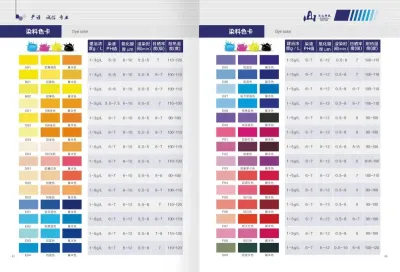
What is the process for chemical polishing using additives?
2024-07-18 15:30
As an important surface treatment technology, chemical polishing is widely used in the manufacturing process of metals, glass, ceramics and other materials. By using specific chemical additives, chemical polishing can significantly improve the smoothness and aesthetics of the material's surface, while also improving the material's corrosion resistance and service life.
This article will analyze in detail the specific process of chemical polishing using additives, revealing the scientific principles and practical applications behind this process.

Basic principles of chemical polishing
Chemical polishing is a process that uses chemical reactions to remove particles and uneven parts from the surface of materials. By soaking the material in a solution containing specific additives, the oxide layer and impurities on the surface are dissolved or converted into easily removed compounds, ultimately creating a smooth and flat surface. Compared with mechanical polishing, chemical polishing has the advantages of fast processing speed, high surface finish, and is suitable for complex shapes.
What is the main process of chemical polishing?
The specific process of chemical polishing can be divided into the following steps:
1. Surface pretreatment,
2. Prepare polishing solution,
3. Polishing treatment,
4. Neutralization and cleaning,
5. Post-processing and detection.
1. Surface pretreatment
Before chemical polishing, pretreatment of the material surface is a crucial step. The purpose of pretreatment is to remove oil stains, scale and other impurities on the surface of the material to ensure the smooth progress of the chemical polishing process. Pretreatment methods include chemical cleaning and mechanical cleaning.
● Chemical cleaning: Use alkaline or acidic solutions to remove oil stains and scale on the surface. For example, sodium hydroxide solution can effectively remove oil stains from metal surfaces, while dilute sulfuric acid solution is often used to remove scale.
● Mechanical cleaning: Remove stubborn dirt and oxides from the surface through mechanical friction. Commonly used mechanical cleaning methods include brushing and sandblasting.
2. Prepare polishing solution
The preparation of polishing solution is the core part of the chemical polishing process. The polishing solution consists of a base liquid and chemical additives. The base liquid is usually water or an organic solvent. The additives are specific chemicals selected according to different materials, such as nitric acid, oxalic acid, potassium aluminum sulfate, etc.
● Base fluid selection: The choice of base fluid depends on the material properties of the polishing object. For most metal materials, water is the commonly used base fluid, and for some special materials, organic solvents such as ethanol can also be used as the base fluid.
● Additive selection: The selection of additives needs to be determined based on material properties and polishing requirements. For example, ammonium nitrate is suitable for polishing soft metals such as aluminum and copper, oxalic acid is suitable for polishing high-end decorative materials, and potassium aluminum sulfate is commonly used for polishing glass and ceramics.

3. Polishing treatment
Polishing treatment is the core step of the chemical polishing process. In this process, the material is soaked in a prepared polishing solution, and particles and uneven parts on the surface are removed through a chemical reaction.
● Soaking time: The length of polishing time depends on the nature of the material and surface requirements. Generally speaking, polishing time ranges from a few minutes to dozens of minutes.
● Solution temperature: Temperature has a significant impact on the polishing effect. Higher temperatures can speed up chemical reactions and improve polishing efficiency, but they also increase the risk of corrosion. Commonly used polishing temperatures are between 20°C and 60°C.
● Solution stirring: In order to ensure uniform polishing effect, the solution usually needs to be stirred. Stirring can prevent sediments in the polishing solution from affecting the polishing effect.
4. Neutralization and cleaning
After the polishing process, the acid and alkali components in the polishing solution may remain on the surface of the material, which needs to be neutralized. Neutralization treatment is usually performed using a dilute alkaline solution or a dilute acid solution.
● Neutralization step: Soak the polished material in a neutralizing solution. Generally, dilute sodium hydroxide solution is used to neutralize acidic residues, and dilute acetic acid solution is used to neutralize alkaline residues.
● Cleaning steps: After neutralization, a large amount of water needs to be used to clean the surface of the material to completely remove residual chemicals and prevent secondary pollution of the material.
5. Post-processing and detection
The final step is to post-process and inspect the polished material to ensure that the polishing effect reaches the expected standard.
● Drying process: The cleaned materials need to be dried to prevent corrosion caused by moisture residue. Drying methods include natural drying, hot air drying and vacuum drying.
● Detection steps: Detect the polishing effect through visual inspection and surface finish measurement. If necessary, microscopic inspection is required to ensure that there are no residual impurities and uneven parts on the surface.

To sum up, the process of chemical polishing using additives includes multiple steps such as surface pretreatment, preparation of polishing solution, polishing treatment, neutralization and cleaning, post-processing and detection. The meticulous operation of each step and the scientific selection of appropriate additives are the keys to ensuring the polishing effect.








